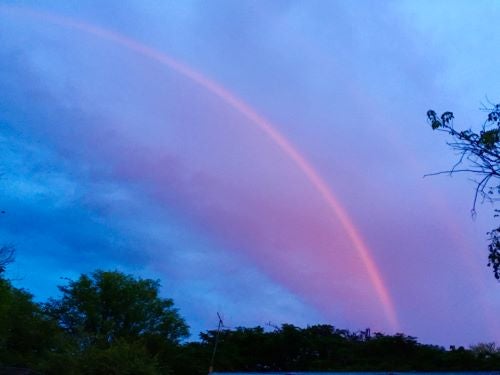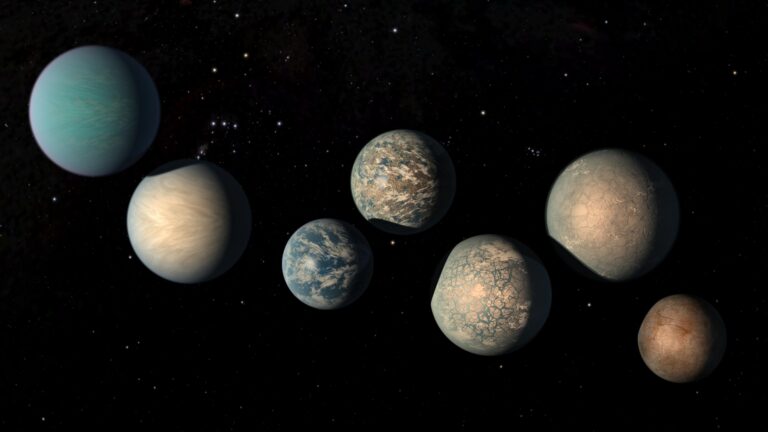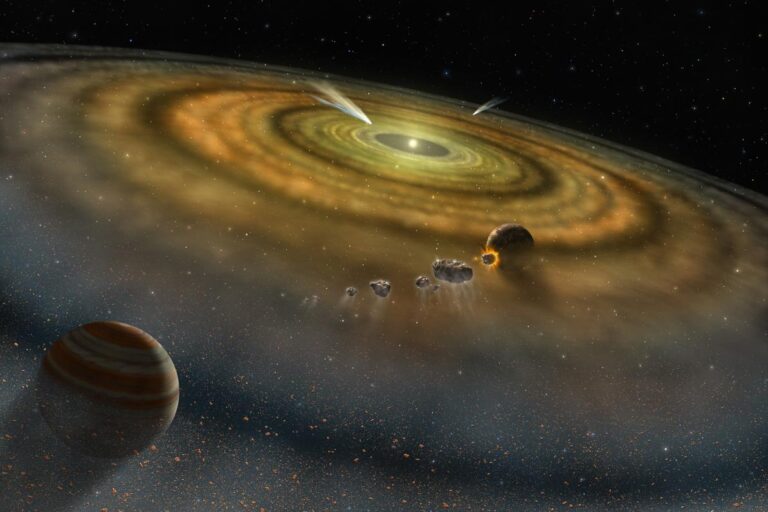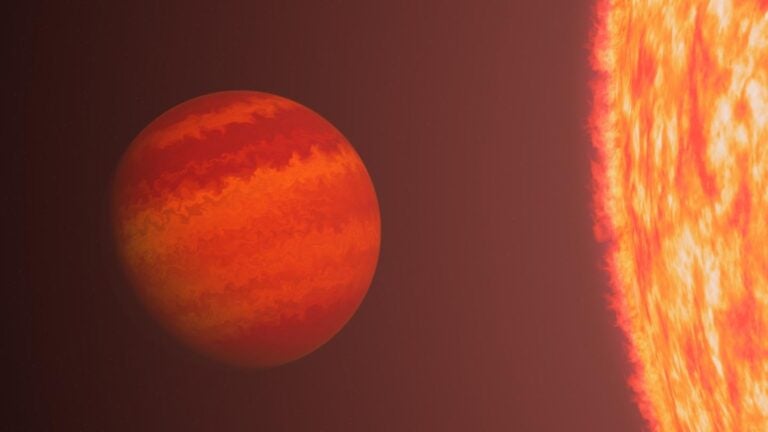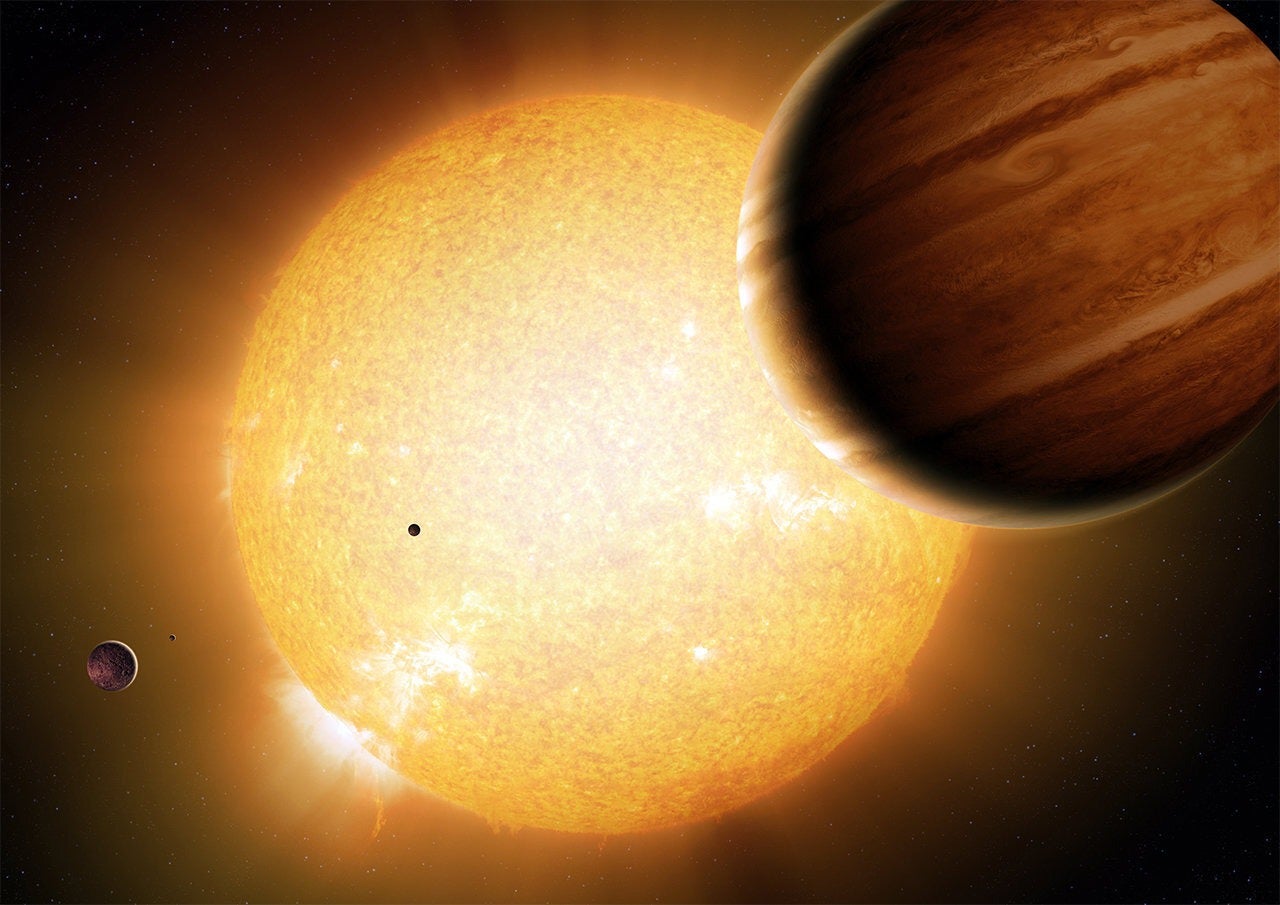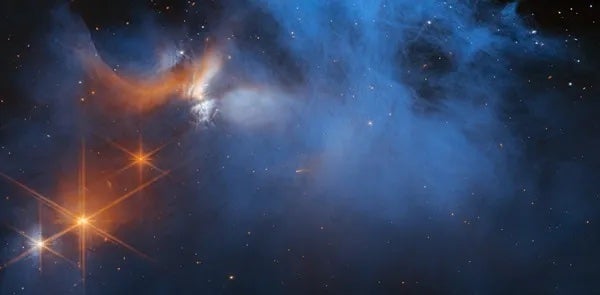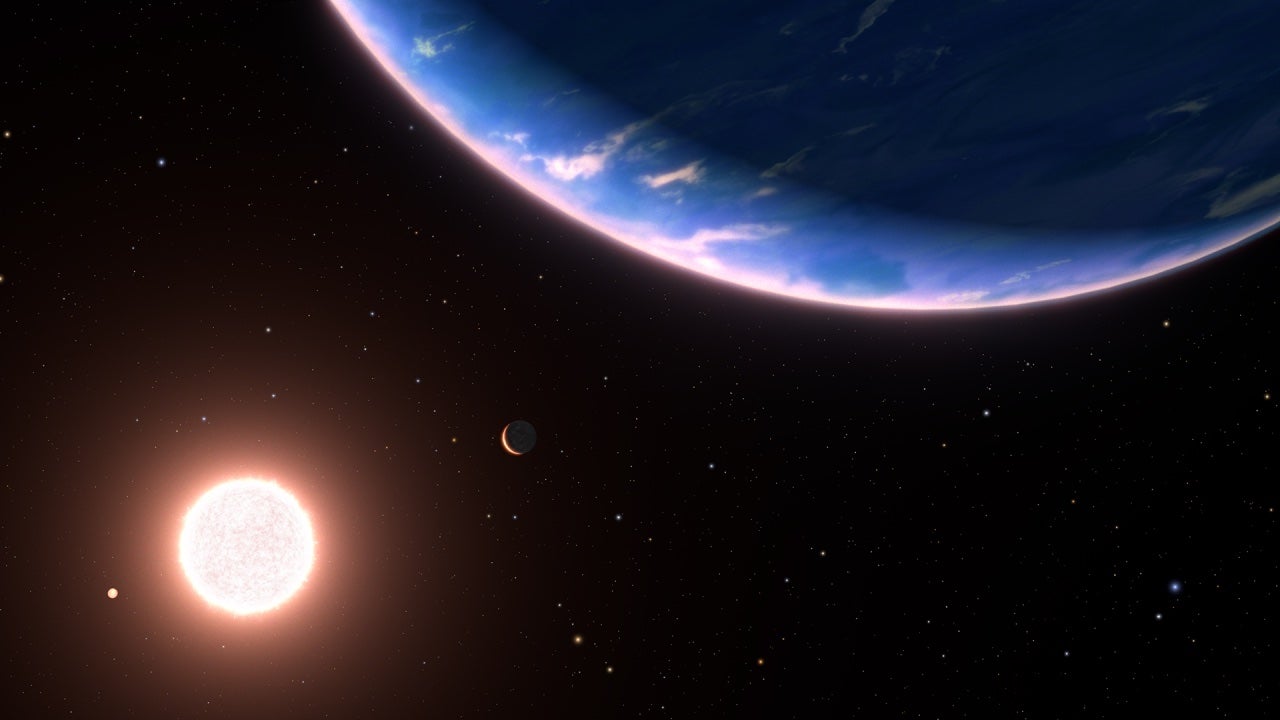The cause
Red rainbows arise from the same atmospheric conditions that cause the Sun to change its color from white to red as it sinks from a more lofty perch to within about a degree of the horizon. As Dutch astronomer Marcel Minnaert explains in his classic The Nature of Light and Color in the Open Air, “Nature is here showing us the spectrum of the sunlight, and demonstrating how its composition changes during sunset.” The cause is the scattering of the shorter wavelengths (by air molecules, dust, and aerosols) during light’s long trek into the lowest and densest part of Earth’s atmosphere.
Because only a setting or rising red Sun will cause a red rainbow in the opposite part of the sky, we see the bow at or near its maximum height above the horizon, 42°. The lower the Sun is in the sky, the higher the rainbow, and vice versa. To see the phenomenon then, an observer needs to be between a low red Sun and a rain shower looming in the opposite direction.
A sighting
On occasion, a red rainbow can form with the Sun a few degrees below the horizon — and that is what occurred in Maun, Botswana, on January 9, 2020. My wife, Deborah Carter, and I went outside to enjoy a postsunset sky infused with fiery hues. As the display faded, we turned and saw a partial red rainbow in the east.
At first, a hint of yellow-green could be seen right after sunset. But as the minutes ticked away, so too did all colors except for red. We were equally amazed to see a double rainbow companion with Alexander’s dark band in between, as well as at least a first-order supernumerary bow associated with the primary bow, all of which glowed red. The bow gradually faded, disappearing a full 19 minutes after sunset, with the Sun nearly
5° below the horizon.
Had we been in a more open environment without trees, we would have likely seen the lower part of the bow “screened off,” as Minnaert explains, by the shadow of the horizon, “so that [the] bow appears to begin at some height above the horizon.”
Historical precedent
Our view was reminiscent of a more spectacular display in July 1877, which Silvanus P. Thompson witnessed over Lake Lucerne in Switzerland, as described in the September 1881 issue of Nature. Thompson says the rainbow “showed only red and orange colours in place of its usual array of hues. No fewer than five supernumerary arcs were visible at the inner edge of the primary bow, and these showed red only.”
Thompson went on to surmise (curiously) that the phenomenon could not be very rare, “from the circumstance that in pictures of the rainbow red and yellow are frequently the only colours set down by the artist.” As an example he notes a semicircular red and yellow rainbow that appears in Raphael’s Madonna di Foligno, painted from 1511 to 1512.
By the way, other natural phenomena can create a red rainbow, particularly at night. For instance, I once observed a red bow in an approaching rainstorm off the southern coast on the Big Island of Hawaii — created by the reddish-yellow glow of molten lava that had erupted from Kīlauea.
As always, send your observations and thoughts to sjomeara31@gmail.com.

